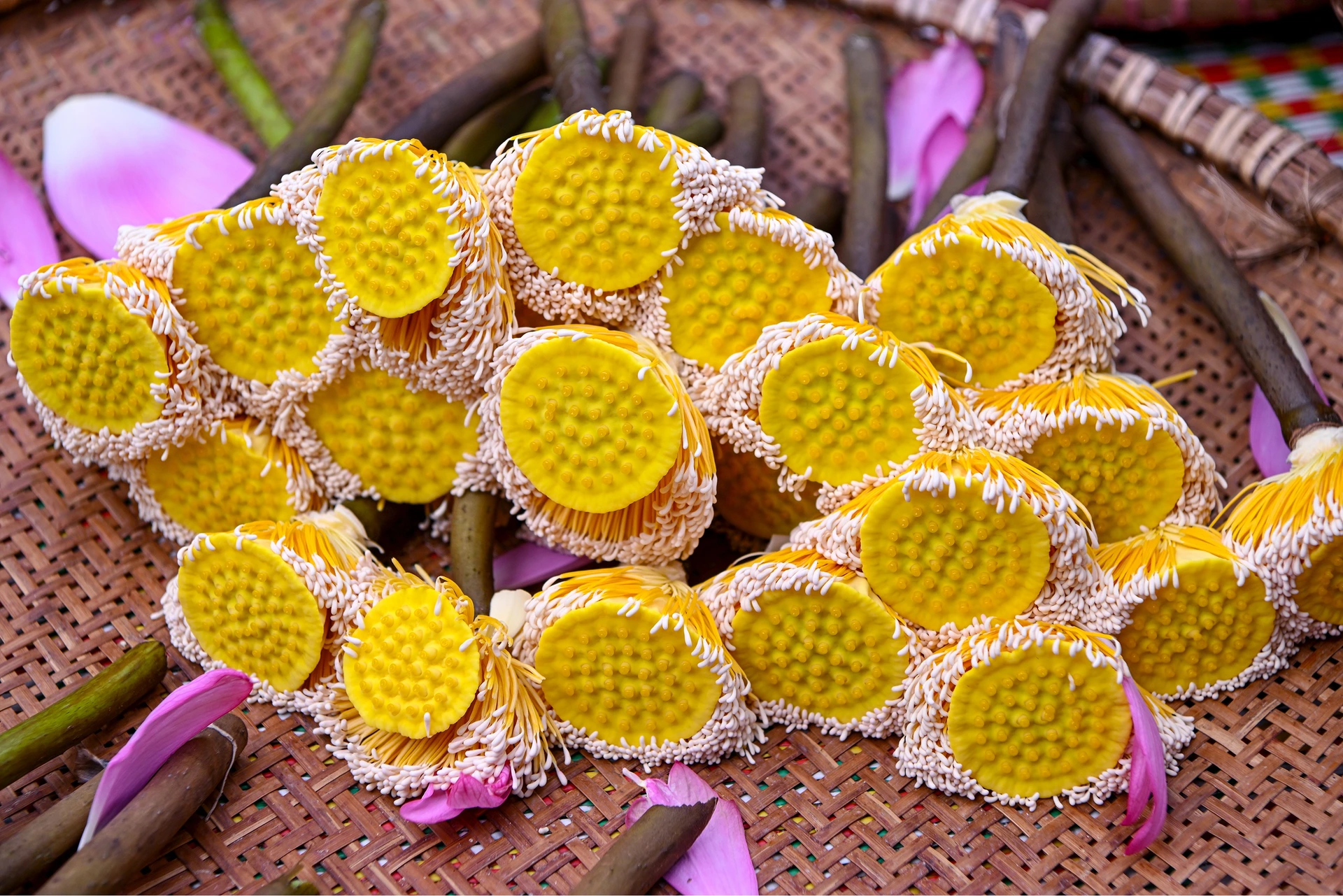Lotus tea is best if the flowers are picked before sunrise, in order to preserve the fragrance.
Usually, the lotus picking session takes place from about 3 o'clock, when the flowers are still smiling. When the flowers were just budding after a night of "sucking" the dew, he pushed the boat around the lotus pond in Thuong Tin, Hanoi, quickly stopped, and gently placed it in the boat compartment.

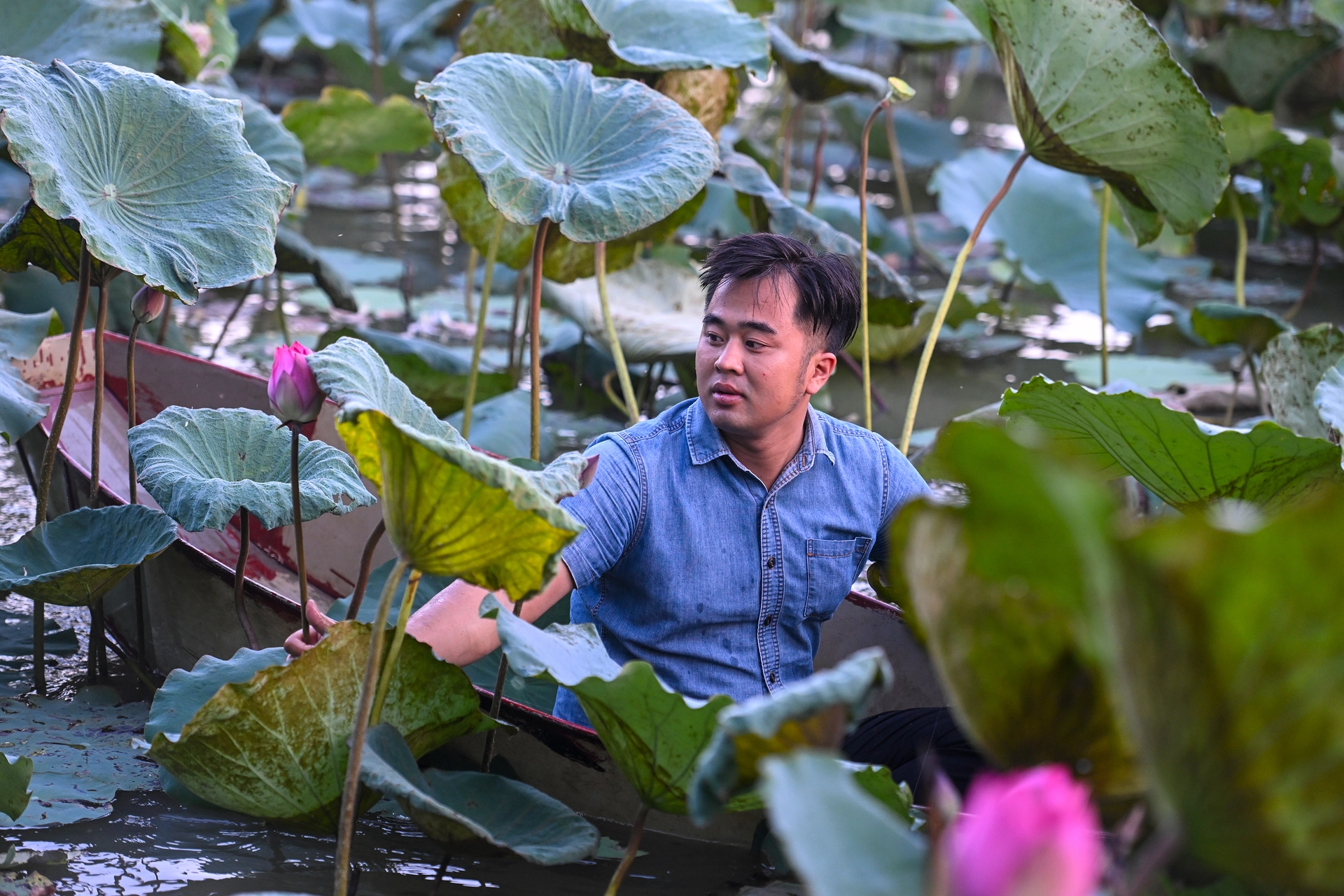
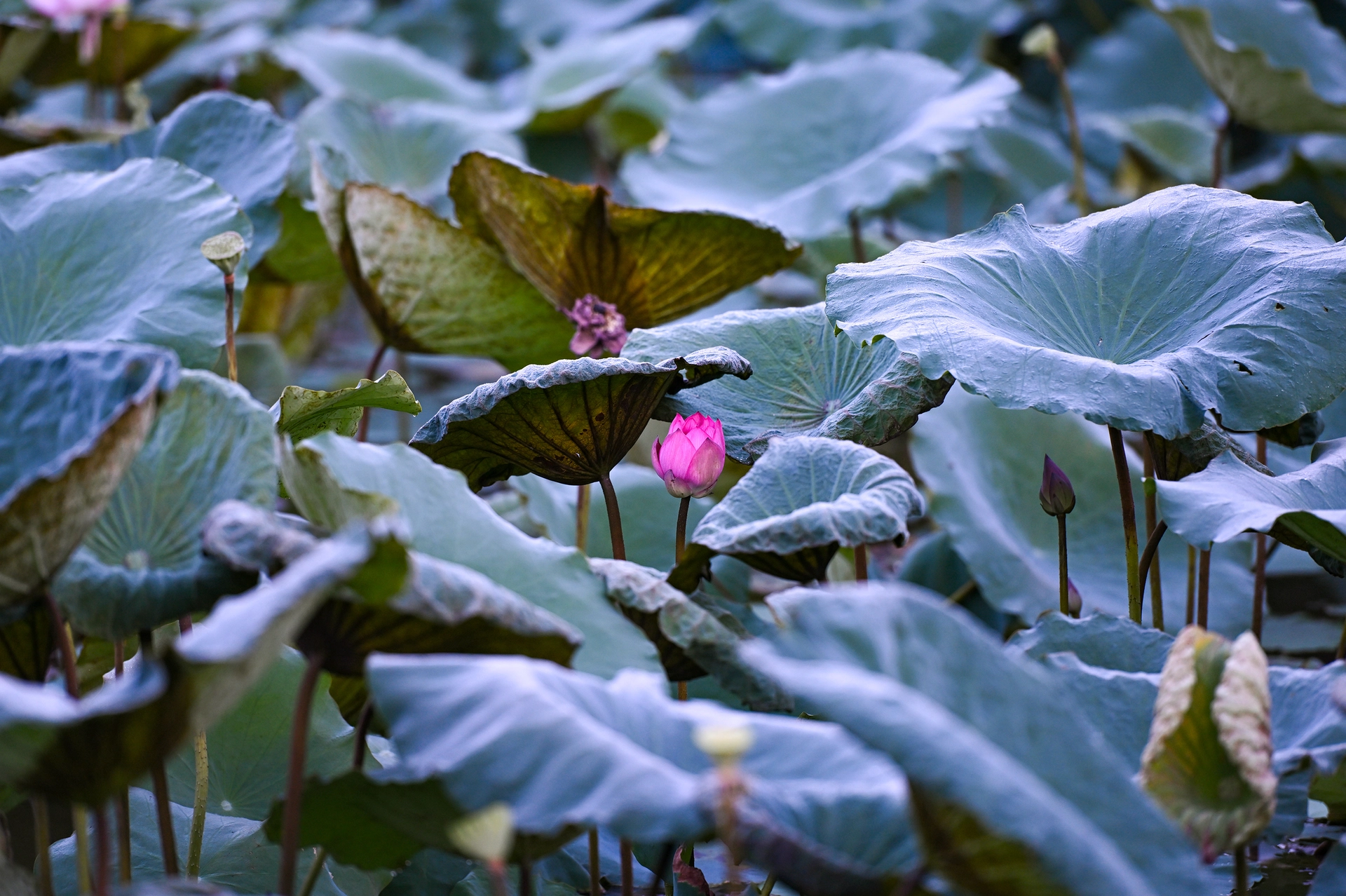
This year, heavy rain continuously poured into the lagoon, damaging many lotuses, and the output decreased to about 1/3 of every year. The lotus in the lagoon is a variety of cypress lotus that was taken from West Lake about 13 years ago. West Lake cypress lotus is the best for making tea because it brings a clear, cool, and not dark aroma like some other species. The flowers are harvested late, almost blooming, when making tea, the price will be cheaper than the lotus flowers picked early.
Lotus blooms from May to early August, making the value of lotus tea even higher. A sample of lotus (3,600 m2) can harvest 15,000-20,000 flowers per crop, marinating about 15 kg of lotus tea. Lotus in West Lake is preferred because there is a lot of silt in the lake, and the "characteristic" fragrance of lotus is good.
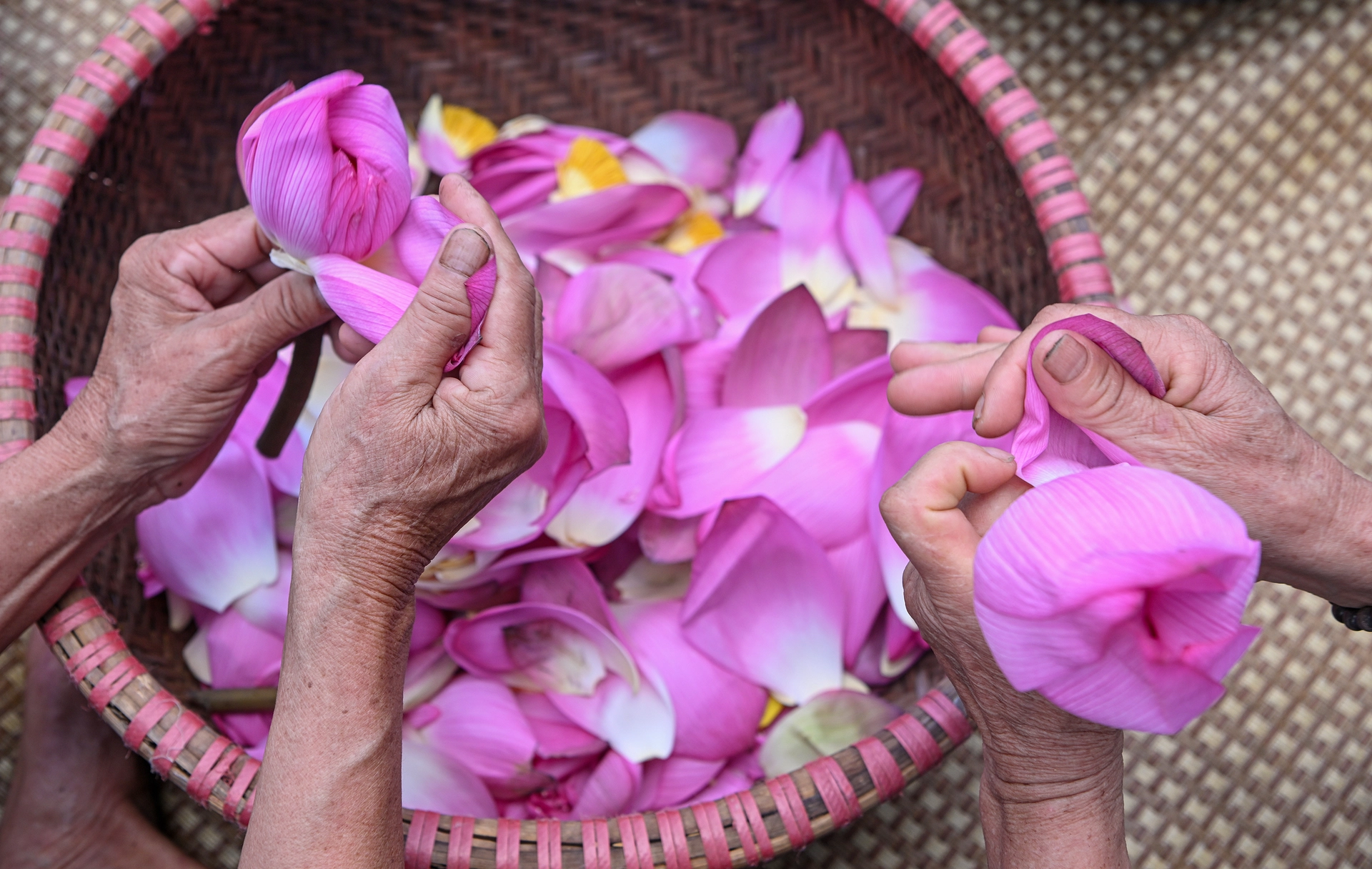
After harvesting, lotus is transported home quickly to prepare for the stage of separating rice and marinating tea. Rice is hidden in layers of pink lotus petals, which is likened to the incense bag of the lotus. After removing the large outer wings of the lotus, the tea maker will rotate the lotus with both hands so that the small petals unfold, revealing the yellow lotus and ivory white lotus rice seeds.
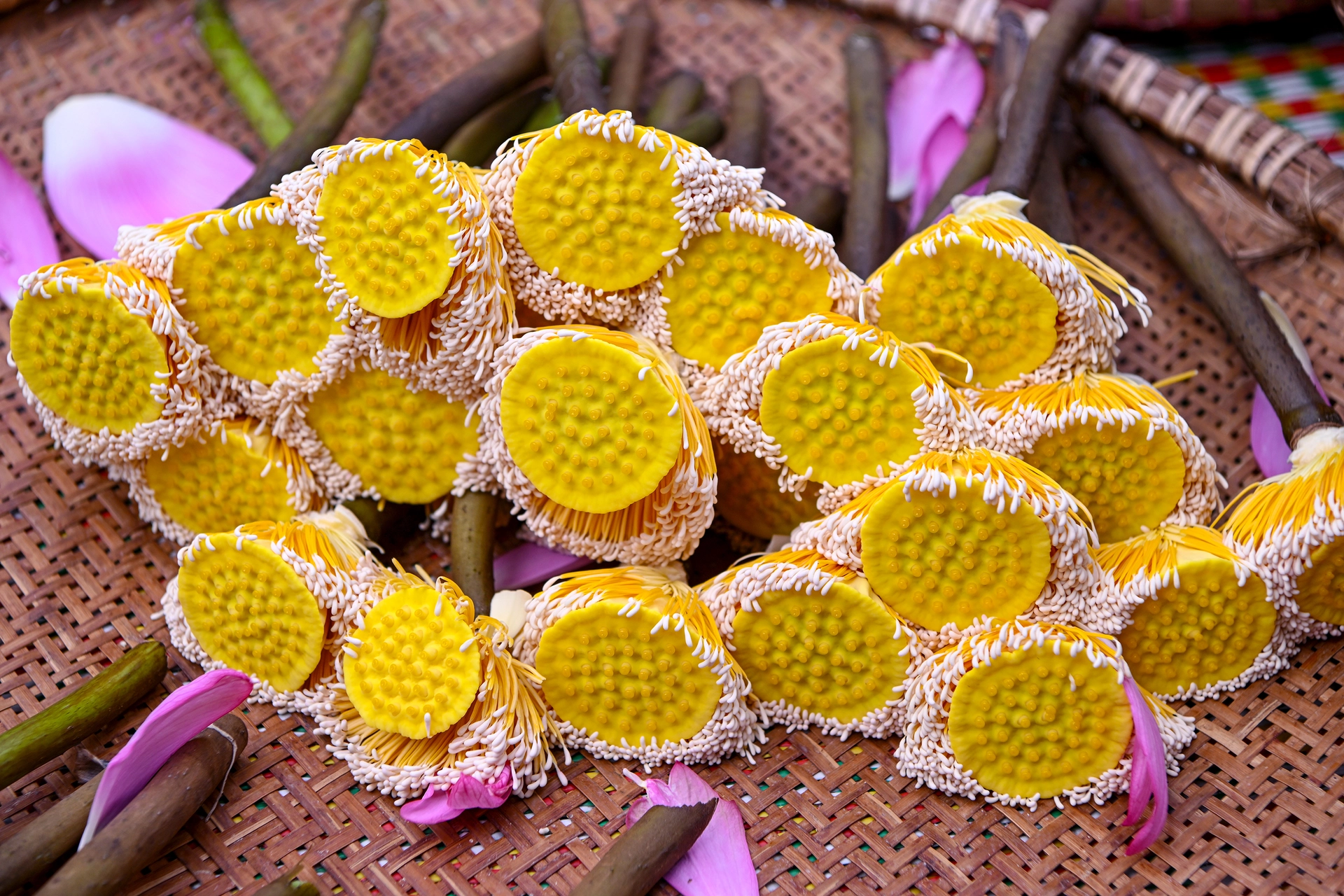

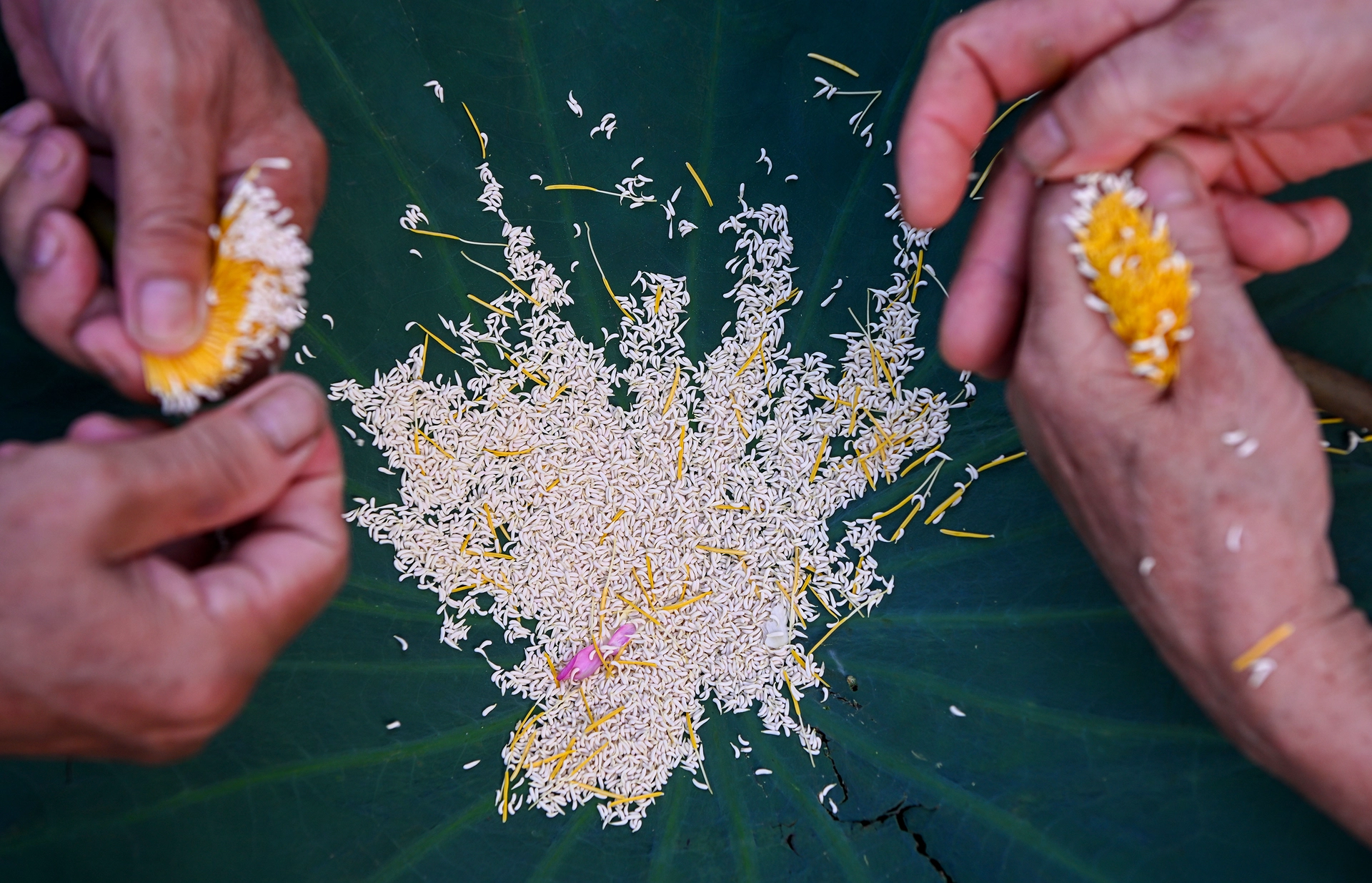
The left hand held the calyx tightly, and the right hand gently plucked the seeds with his finger and fell on the lotus leaf placed below. This stage requires to be done quickly, so that the lotus fragrance disappears for a long time. However, the plucker must also be very careful not to break the lotus rice, causing the tea to be sour and bitter when marinating.
After being plucked, lotus rice will be marinated with tea. In the photo is white tea, taken from ancient Shan Tuyet tea trees. The advantage of this tea is that it is less astringent, when drunk, you can clearly feel the lotus aroma and tea taste, which Mr. Duyet likened to "the quintessence of mountains and forests combined with the quintessence of Hanoi".
Traditional marinators will spread a layer of lotus rice and then a layer of tea, and so on until the tea runs out. Shan Tuyet tea has large wings, so it is difficult to absorb the aroma like other teas, and it will cost more rice. Normally, 1 kg of tea will cost about 1.5 kg of lotus rice, equivalent to 1,500 cottons.

After marinating, the tea is brewed in crockery jars, the bottom and top are lined and covered with a layer of lotus leaves. After about two days, the tea has absorbed all the aroma from the rice, the maker sifts the rice out and dries the tea, then continues to marinate the rice again. The procedure is repeated 5-7 times.
However, nowadays, to serve a variety of customers, lotus tea makers only marinate two or three times. The finished product is usually cheaper, due to the reduced aroma. Marinating 5-7 times is enough, do not marinate more, making the lotus overpower the taste of tea.
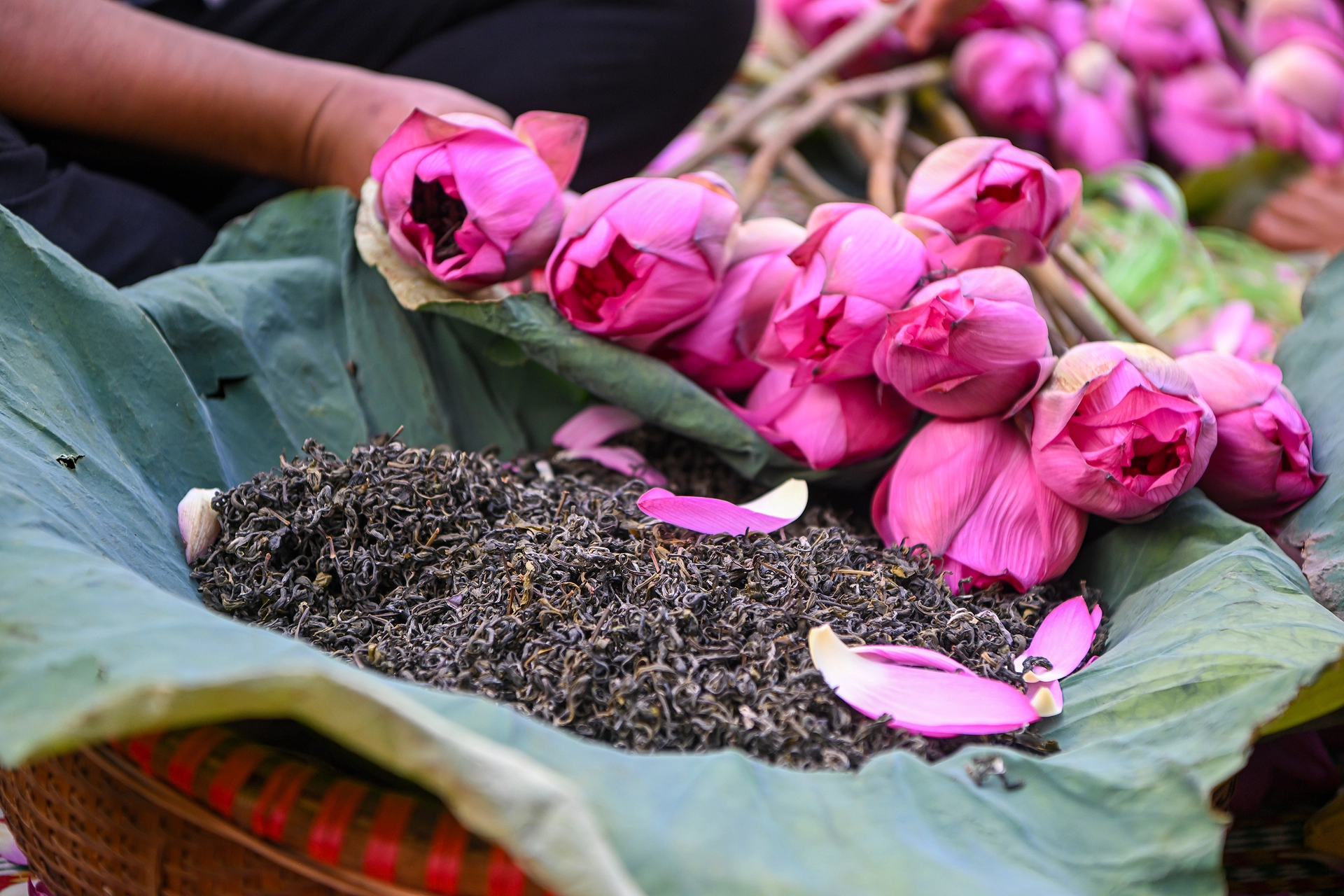
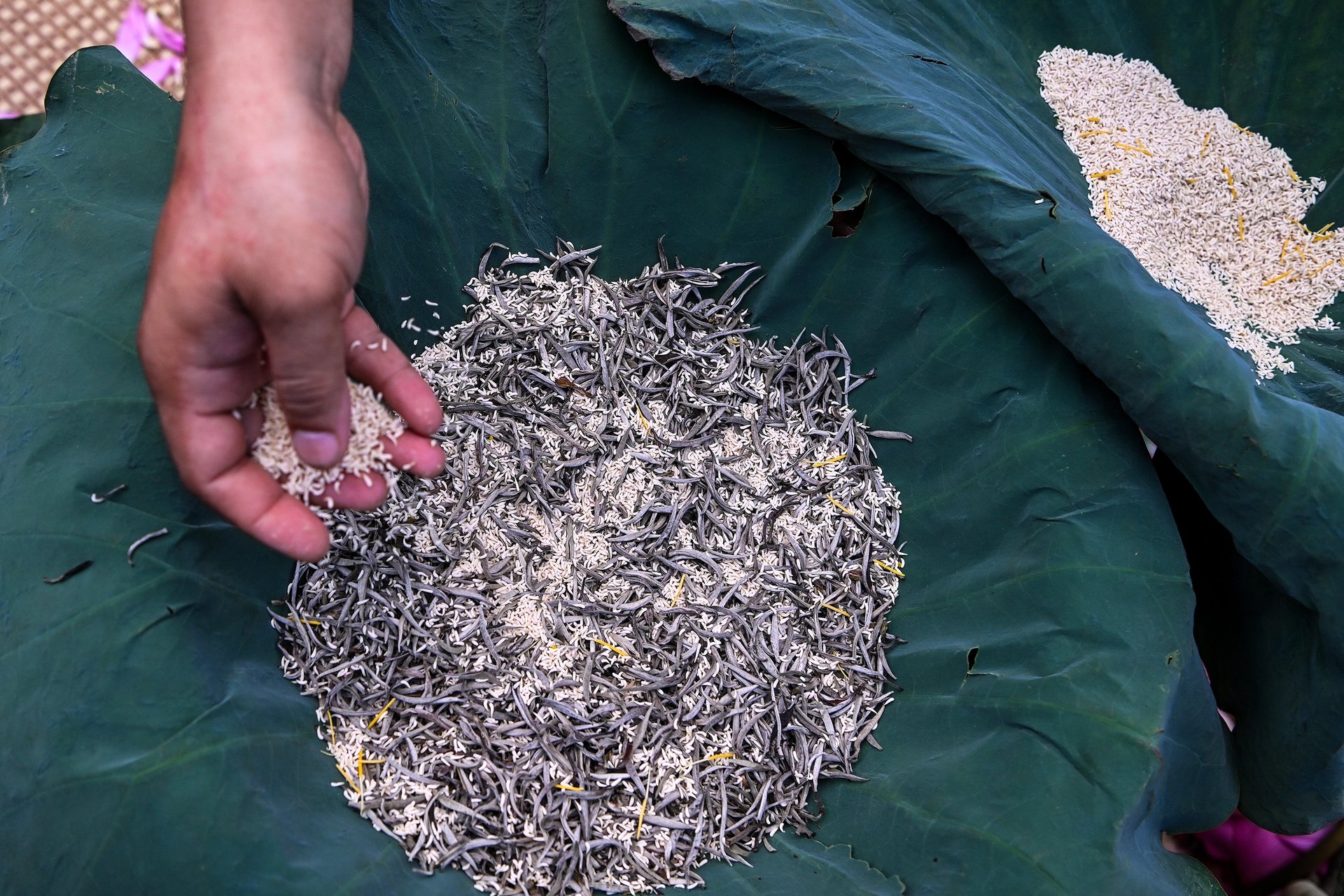

In addition to the traditional way of marinating, a type of marinade is also popular. The seller will put the tea directly into the lotus, dry it and sublimate it and then pack it. At this time, the tea still smells lotus, the finished product is beautiful because when peeled, you will see that the pink lotus retains its shape. However, the lotus fragrance is not up to the limit, so the price is also cheaper.
Photo: Giang Huy
According to VnE
